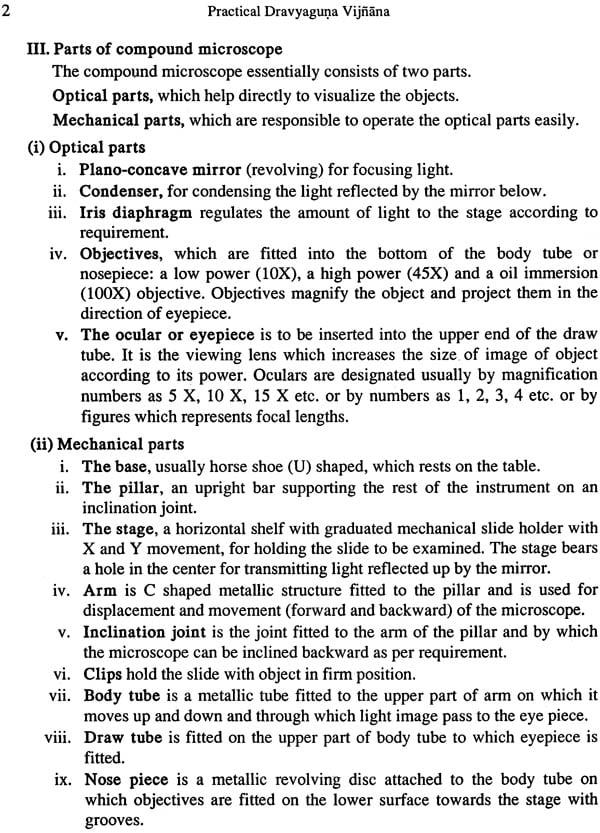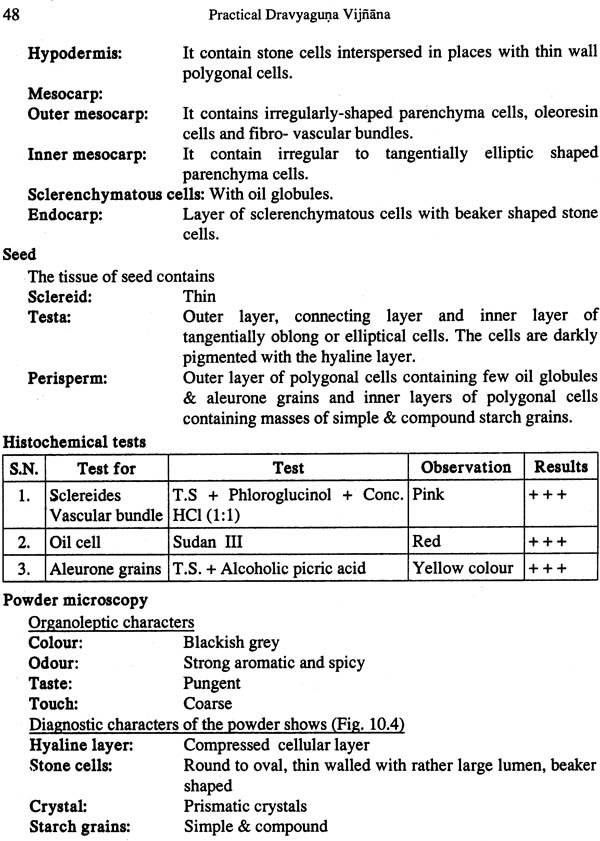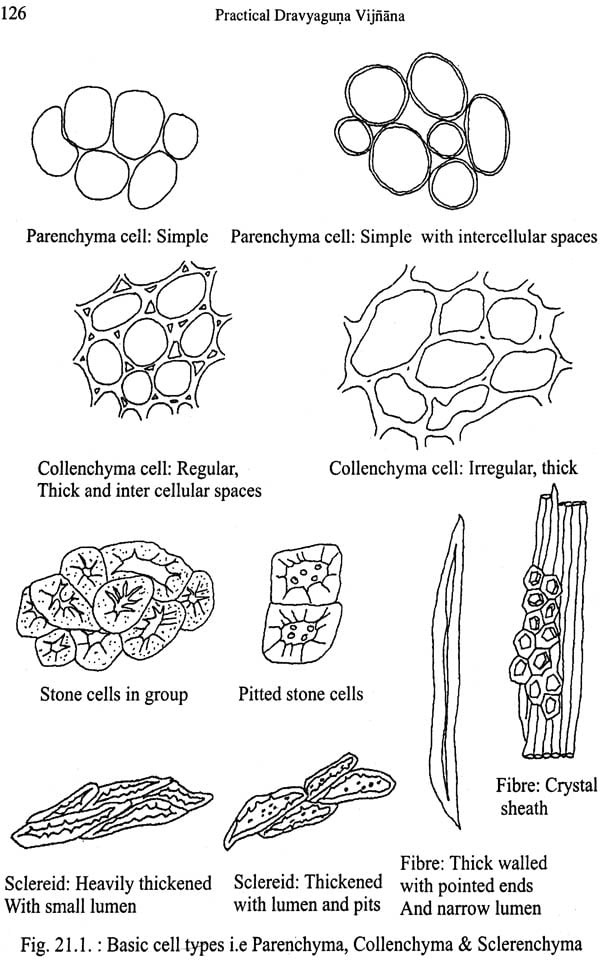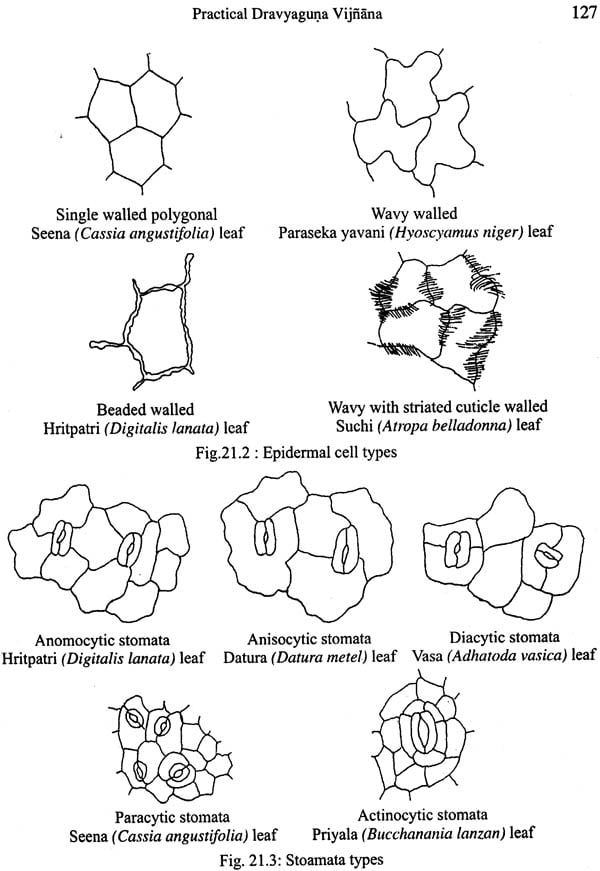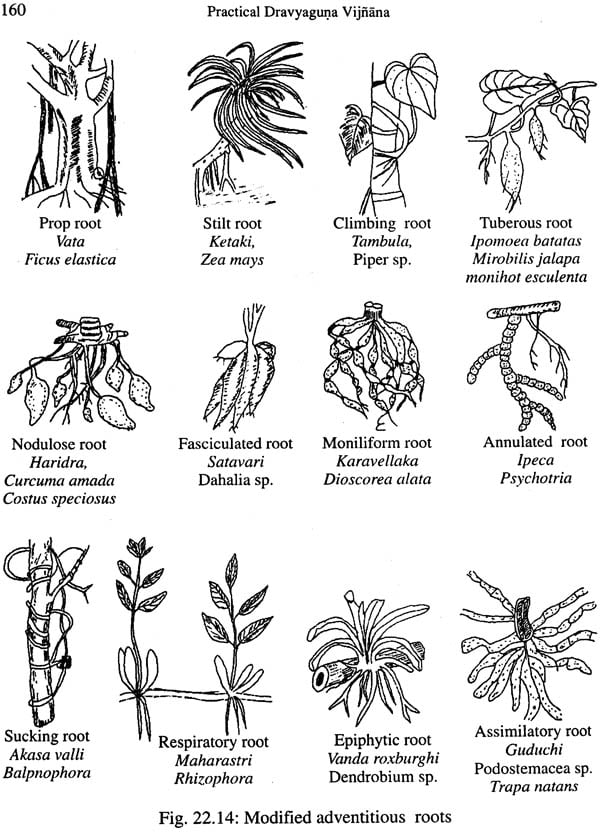
Practical Dravyaguna Vijnana (A Practical Mannual for the Dravyaguna Students)
Book Specification
| Item Code: | NAM010 |
| Author: | Dr. Rabinarayan Acharya, Dr. Rakshapal Gupta, Dr. Om Prakash Rout, and Mrs. Rashmibala Sahoo, |
| Publisher: | Chowkhamba Krishnadas Academy |
| Language: | English |
| Edition: | 2015 |
| ISBN: | 9788121803670 |
| Pages: | 192 (408 B/W Illustrations) |
| Cover: | Paperback |
| Other Details | 9.0 inch x 7.0 inch |
| Weight | 280 gm |
Book Description
Prof. (Dr.) Rabinarayan Acharya, born on 26th February 1967, is working as a Professor Dravyaguna at IPGT & RA, Gujarat Ayurved University, Jamnagar, Gujarat. He obtained his B.Sc. (Botany, Hons.), BAMS (Hons.) degree from Utkal University & M.D. (Ayu.) and Ph.D. in Dravyaguna from Gujarat Ayurved University, Jamnagar. He has more than 135 research papers (published in peer review research journals) and three books (as co-author) to his credit. He is also working as Member Secretary of National Pharmacovigilance Programme for ASU drugs. He has 21 years of both UG and PG teaching experience in the field of Dravyaguna and medicinal plants and completed two Extra Mural Research (EMR) projects.
Prof. (Dr.) Rakshapal Gupta, Professor Drvayguna at Govt. Ayurveda College, Raipur, Chhattisgarh is from a traditional Vaidya family. He is born at Potebirni, Raigarh, Chhattisgarh on 1st March 1960. He obtained M.D. (Ayu.) degree from Ravishankar University, Raipur in 1988. He is having more than 20 years teaching and research experience in the field of Dravyaguna especially medicinal plants. He has worked as member, of survey team of Non-Timber Forest Produce, Chhattisgarh. Along with teaching he is also working as Registrar, Chhattisgarh Ayurveda Board & State Council of Homoepathy, Raipur, Chhattisgarh.
Dr. Om Prakash Rout, born on 17th July 1976, is working as a Lecturer Drvayguna at Govt. Ayurveda College, Raipur, Chhattisgarh. He obtained his B.A.M.S. degree in 1997 from Sambalpur University, Odisha; M.D. (Ayu.) in Dravyaguna from Rajiv Gandhi University of Health Sciences, Bangalore in 2003 and Ph. D (Ayurveda) from Utkal University, Odisha in 2012. He worked as Research Associate in the project entitled “Development of SOP of manufacturing process of compound ASU formulations and their pharmacopoeial standards” at Regional Research Laboratory, Bhubaneswar, Odisha. He has 15 research papers, published on peer review research journals in the field of Dravyaguna and standardization of Ayurvedic drugs.
Mrs. Rashmibala Sahoo, born on 5th June 1981, is working as a scientific Officer (Botany) at State Drug Testing & Research Laboratory (ISM), Bhubaneswar, Odisha. She obtained her M. Pharma (Pharmaceutics) degree in 2007 from University, Bhubaneswr, Odisha. She has 6 years research experience in identification if Ayurvedic crude drugs and its formulations. She has 10 research papers, published on peer review research journals in the field of Ayurvedic drugs and its formulations.
Demand for herbal medicines is increasing in leaps and bounds. Owing to the herbal re-naissance across the world, the need for authentication of medicinal plants/herbs is gaining momentum. In the historic and prehistoric times especially in the field of Ayurveda the quality control aspects were typically personalized, wherein, Vaidyas themselves use to collect and process the crude drugs and subject them to various formulations.
Due to the outburst of the population, supply of crude drugs was sufficed by establishment of commercial companies and markets. This has led to the development of substandard quality drug and addition of adulterants and substitutes in the basic crude drugs. Thus, the correct identification of crude drug has become very essential to have check on the genuinity of these drug samples.
Pharmacognosy is one such branch which deals with detailed macroscopic and microscopic evaluation of plants. This is an efficacious tool for species identification and hence can play a vital role in authentication of drug material i.e. the true identity of crude drugs. This study is an integral part of the curriculum BAMS—II and will help them to clarify the basis of plant medicines.
On this background, the current attempt entitled “Practical Dravyaguna Vijnana” has been purposely designed and drafted in lines with CCIM syllabus by Prof. Rabinarayan Acharya and other experts. It focuses on pharmacognostical evaluation of various parts of medicinal plants possessing therapeutic value viz. roots, leaves, flowers, seeds, bark, stem and exudates including their powder microscopy. This book also denotes the possible substitutes and adulterants with the help of various histochemical and phytochemical tests thereby adding to the knowledge of the students and their ability to recognize genuine drugs.
There has been an urgent need for a practical book for the students of Dravyaguna as per the new prescribed syllabus of CCIM. I hope that the present practical book will be of utmost help to the students of Dravyaguna in particular and those scholars who deal with herbal medicines.
I take this opportunity to congratulate Prof. Rabinarayan Acharya and his team for the great effort. He is a very sincere worker having a good academic record. The present work is an example of his ardent love for Ayurveda. I expect many such works in future from the pen of Prof. Rabinarayan Acharya. I congratulate and wish him success in future.
Central Council of Indian Medicines (CCIM), in the recent past, have taken steps to reform Ayurvedic Education and make it more practical oriented. As a part of this, syllabus of various subjects have been modified and new syllabus has been prescribed for different courses of Ayurvedic Education, taking into consideration of the recent advances in the medical science and challenges face by the physician during their practice. In this process, both the theory and practical syllabus of Dravyaguna, at Under Graduate, PG Diploma and Post Graduate level, have been restructured.
The therapeutic efficacy of the drugs used in Ayurveda greatly depends upon the use of proper and genuine raw materials. Hence, an Ayurveda graduate should know the easy or convenient classical as well as recent methods of drug identification and should be trained in such a way that he/she should be able to identify the genuine drug. All the parts of the plant are used in drug industry. According to a survey on the annual consumption of raw drugs it has been observed that 50% root, 15% fruit/seeds, 12% wood based, 9% whole plant, 7% bark/stem, 4% leaves, and 3% flower are used as raw material by the industry. Study of each part needs to be carried out carefully. Methods of the identification of plants on the basis of examination of their parts become very much important in such circumstances.
The recent practical syllabus of Dravyaguna vijnana, recommended by CCIM, New Delhi, is a step to achieve this aim. Till now no exclusive practical book on Dravyaguna is available which can guide the students to carry out practical work for the identification of both organized as well as unorganized drugs. Therefore it was thought worthy to draft a book, based on practical experience, which can guide the teachers, students and technicians engaged in Dravyaguna practical.
The present book is an attempt to provide baseline information about minimum knowledge about the equipments needed for conducting Dravyaguna practical. Definition of various plant parts with diagrammatic presentation of various plant parts with an example of Ayurvedic medicinal plant for the correct botanical identification of the plant. Minimum preparatory requirements for conducting a systematic field tour, preservation of dry and wet drug sample through standard herbarium technique method.
In this book we have tried to give more emphasis on identification of different plant parts as prescribed in the BAMS syllabus. Each drug was experimented in the laboratory and the drawings included in the book have been solely made by us from the powders in our laboratory from authenticated samples. Different plant parts i.e. root, stem, fruit, rhizome, seed, flowers, bark, leaves including exudates, were dealt with relation to their botanical source, official source, synonyms, availability, identifying macroscopic characters of both fresh and dry conditions, transverse sections, organoleptic characters, powder microscopy, histochemical evaluations, pharmacological actions, adulterants, substitute and important formulations. Syllabus has been covered in a simple format and language. All diagrams are scientifically labelled and self explanatory. Efforts have been made to provide maximum description through self-sketched diagrams. For easy understanding of non Ayurvedic persons, the English equivalents of classical Ayurvedic terms (disease conditions), as mentioned in Ayurvedic Formulary of India, have been provided. At the end of the book, definition of pharmacological terms and index of botanical terms have been provided.
It is our earnest hope that this book will full fill the expectations of the students and teachers of Ayurveda and Pharmacy. It is our first attempt in this direction, there may be short comings. Constructive suggestions for improvement and corrections of inadvertent errors, if any, will be gladly and gratefully received, highly appreciated and carefully considered.
| 1 | Microscope | 1 |
| 2 | Kanda (Stem) | |
| i | Guduci | 15 |
| ii | Asthisrnkhala | 21 |
| 3 | Patra (Leaves) | |
| i | Vasa | 27 |
| ii | Kumari | 33 |
| 4 | Puspa (Flowers and parts of flowers) | |
| i | Dhataki | 39 |
| ii | Japa | 42 |
| 5 | Phala (Fruits) | |
| i | Marica | 47 |
| ii | Madanphala | 52 |
| iii | Vidanga | 57 |
| 6 | Bija (Seed) | |
| i | Eranda | 62 |
| ii | Kapikacchu | 68 |
| 7 | Tvaka (Bark) | |
| i | Kutaja | 73 |
| ii | Arjuna | 79 |
| iii | Aswattha | 84 |
| 8 | Mula (Root) | |
| i | Punarnava | 89 |
| ii | Citraka | 95 |
| 9 | Niryasa (Exudate) | |
| i | Guggulu | 100 |
| ii | Mocarasa | 102 |
| 10 | Jangama dravya | |
| i | Madhu (Honey) | 104 |
| ii | Goghrt (Ghee) | 107 |
| 11 | Herbarium | 111 |
| i | Equipment list | |
| ii | Handling the plant during collection | |
| iii | Data to be recorded in the field | |
| iv | Pressing | |
| v | Mounting | |
| vi | Herbarium cabinet | |
| vii | Poisoning | |
| viii | Wet preservative | |
| 12 | Basic concept of plant tissue | 120 |
| i | Parenchyma | |
| ii | Collenchyma | |
| iii | Sclerenchyma | |
| iv | Epidermis | |
| v | Stomata | |
| vi | Trichomes | |
| vii | Xylem | |
| viii | Phloem | |
| ix | Periderm | |
| x | Secretory structures | |
| xi | Starch | |
| xii | Crystals of calcium oxalate | |
| xiii | Calcium carbonate | |
| xiv | Aleurone | |
| xv | Silica | |
| 13 | Macromorphology | 135 |
| i | Leaf: Parts of leaf, diagnostic features of leaf (forms, texture, surface, dimensions, attachment of leaf, lamina structure, shape of leaf, composition of leaf, venation of leaf, margin of leaf, apex of leaf, base of leaf) | |
| ii | Root: Regions of root, classification of root, | |
| iii | Stem: Normal and modification of stem | |
| iv | Bark: Shape of bark, outer surface marking, inner surface marking | |
| v | Flowers: Flowers parts, Types of Inflorescences | |
| vi | Fruits | |
| vii | Seed | |
| viii | Gums | |
| ix | Resin | |
| x | Dried extract & Juice | |
| xi | Insect galls | |
| Reagents & Solutions | 166 | |
| Pharmacological terms | 168 | |
| Bibliography | 170 | |
| Index | 173 |

